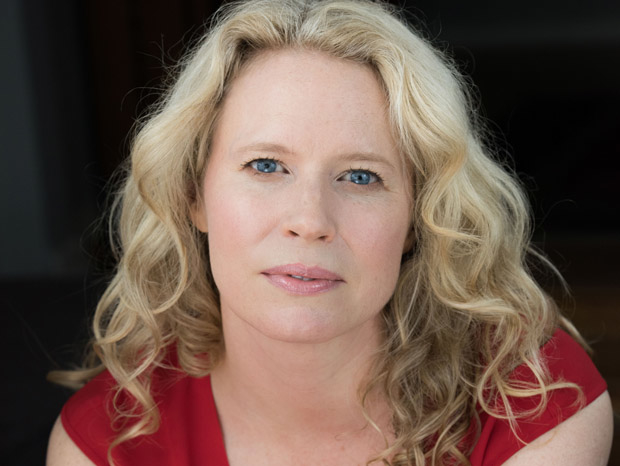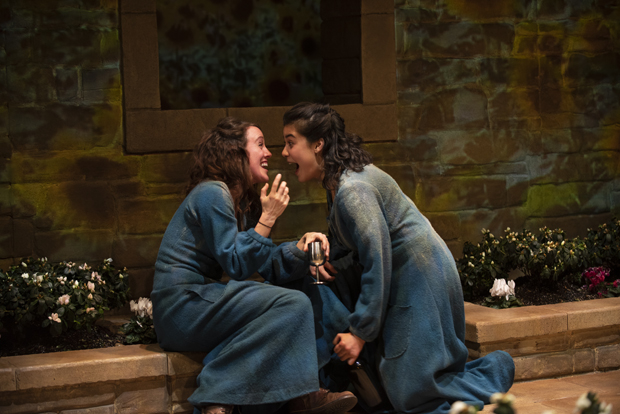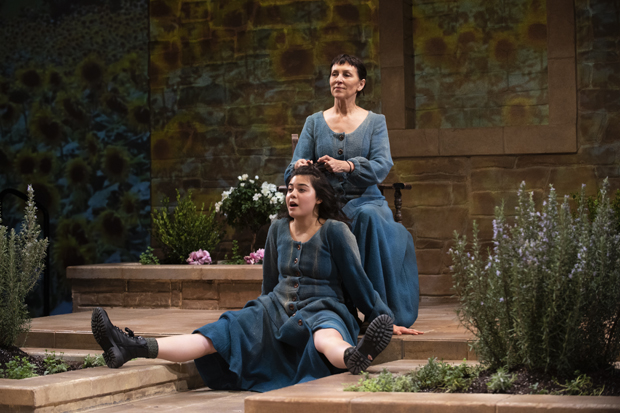First Person: How Jessica Dickey Reopened a Pandora's Box for The Convent
The playwright shares the secrets of putting a personal play on its feet.

(© Todd Cerveris)
There were aspects of writing The Convent that were true to how I always write a play: I kept the play in a notebook that contained all of my notes and scenes, and indeed the entire first draft. I had spent a great deal of time researching the terrain and subject of the piece — in this case, convents in France and medieval female mystics. I wrote a letter to the characters and to the play itself.
But nothing else about The Convent resembled my previous experiences.
The Convent is probably the most collaborative piece I've ever made. After Rising Phoenix commissioned it in 2015, our intent was to produce it in 2016. Due to schedules, it got pushed to 2017, then pushed again to 2019. By the time we arrived at preproduction, I felt safe from the chaotic and pivotal time that the content of The Convent was born out of — and I was also trepidatious about reopening that period of my life. If The Convent were a box and you opened it, a rush of wind would blast your face, carrying howls of freedom and discovery and grief and guilt and femininity and ferocity.
Um. No thanks. Lived it, learned a lot, grateful for the stable life I've built since.
I knew there was no way I would be able to clearly see the play on my own. So if we were going to produce it, I knew I would need strong collaborators: people who were exceptional at their craft, who understood the aims of the play, but, most importantly, who loved the jagged, weird edges of the play, who were on board with making something jagged and weird for the audience. I once read that fire ants have the ability to withstand a flood because they take hold of one another and form a kind of raft that can float for up to 30 days. That is what we did to make The Convent.

(© Ahron R. Foster)
What did that look like in practical terms?
A three-day retreat at Lake Lucille to begin rehearsals. Many sessions of physical improvisations. Madonna music circa 1989 at the start of every rehearsal. A lot of hilarious text chains. But mostly? Rewrites. A lot of rewrites. More than I have ever undertaken in a production process. More than was reasonable to ask of our heroic actors and designers and producers and crew. But they were so lionhearted and tender toward the play, and they were so like a fire-ant raft — we held tight and floated. We even did this joyfully. (The Madonna helped.) This bond was in part due to the nature of the play and its themes — inherent divinity, sensuality, feminism, mysticism, freedom, power, actualization — the play demands that the team show up ready to play and ready to connect. And certainly the creative environment to foster such work was entirely due to the fierce, unflinching attentiveness of director Daniel Talbott.
I remember an early preview when I came in with a massive rewrite: I had cut three separate two-handed scenes and embedded only the most important information into a large group scene. I felt sick. I remember joking with the cast that I deliberately wore make-up and a kickass blazer, so when I looked in the mirror I would see a professional who had premiered many plays and was in the middle of her body of work. While Daniel took the actors through the changes, I went to each designer and thanked them, acknowledging that this rewrite meant re-teching a lot of their work. Joel Moritz, our wonderful lighting designer, turned to me and said, "This is exciting. More theater should be like this."
For me that moment was emblematic of the entire experience of The Convent.

(© Ahron R. Foster)








